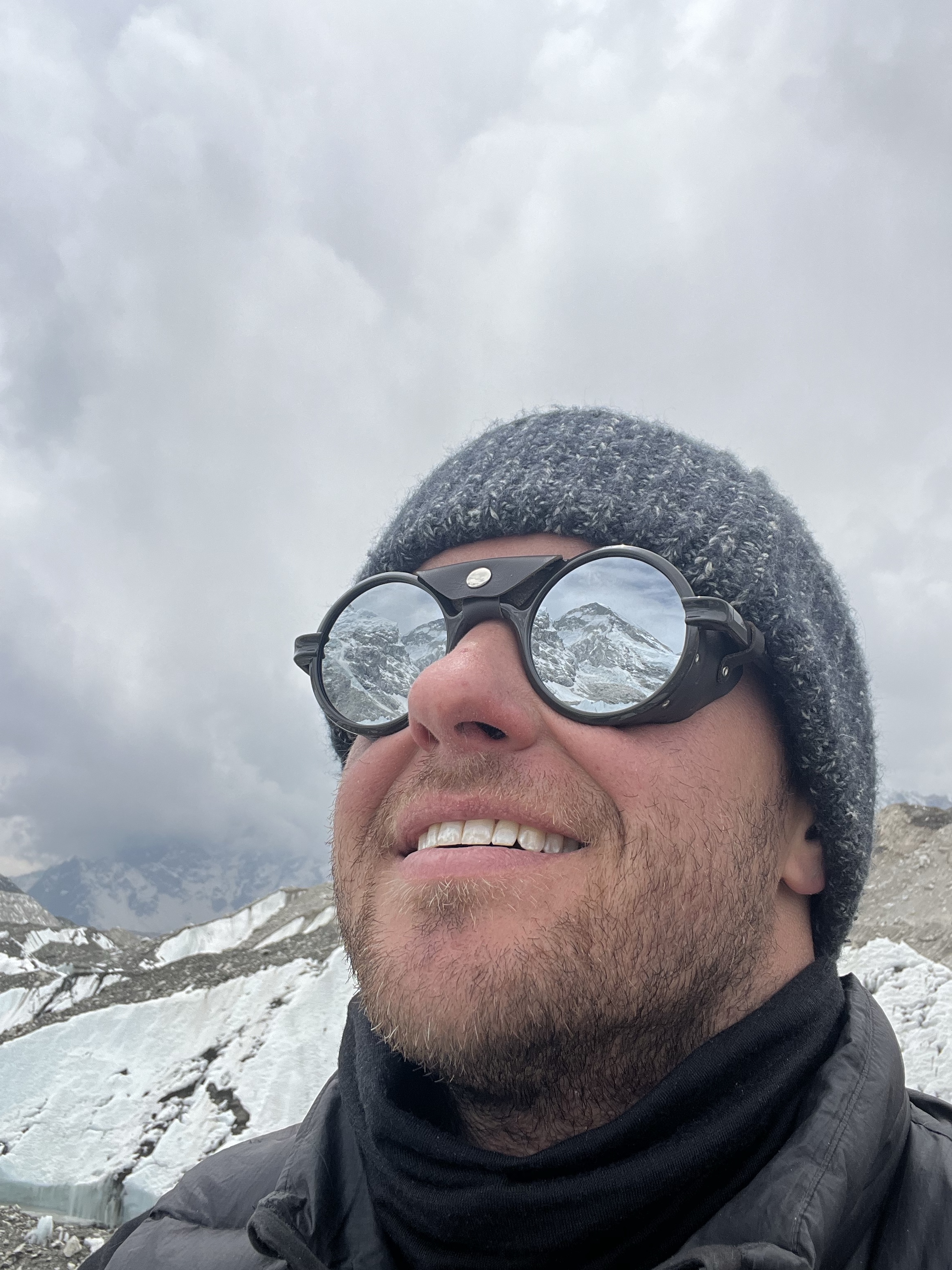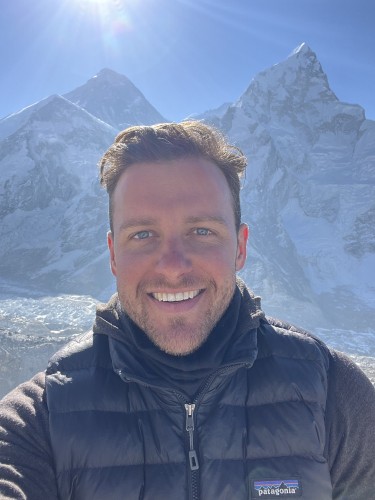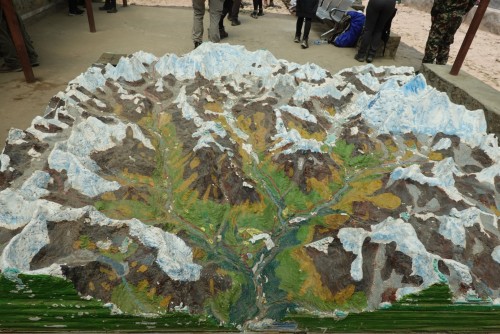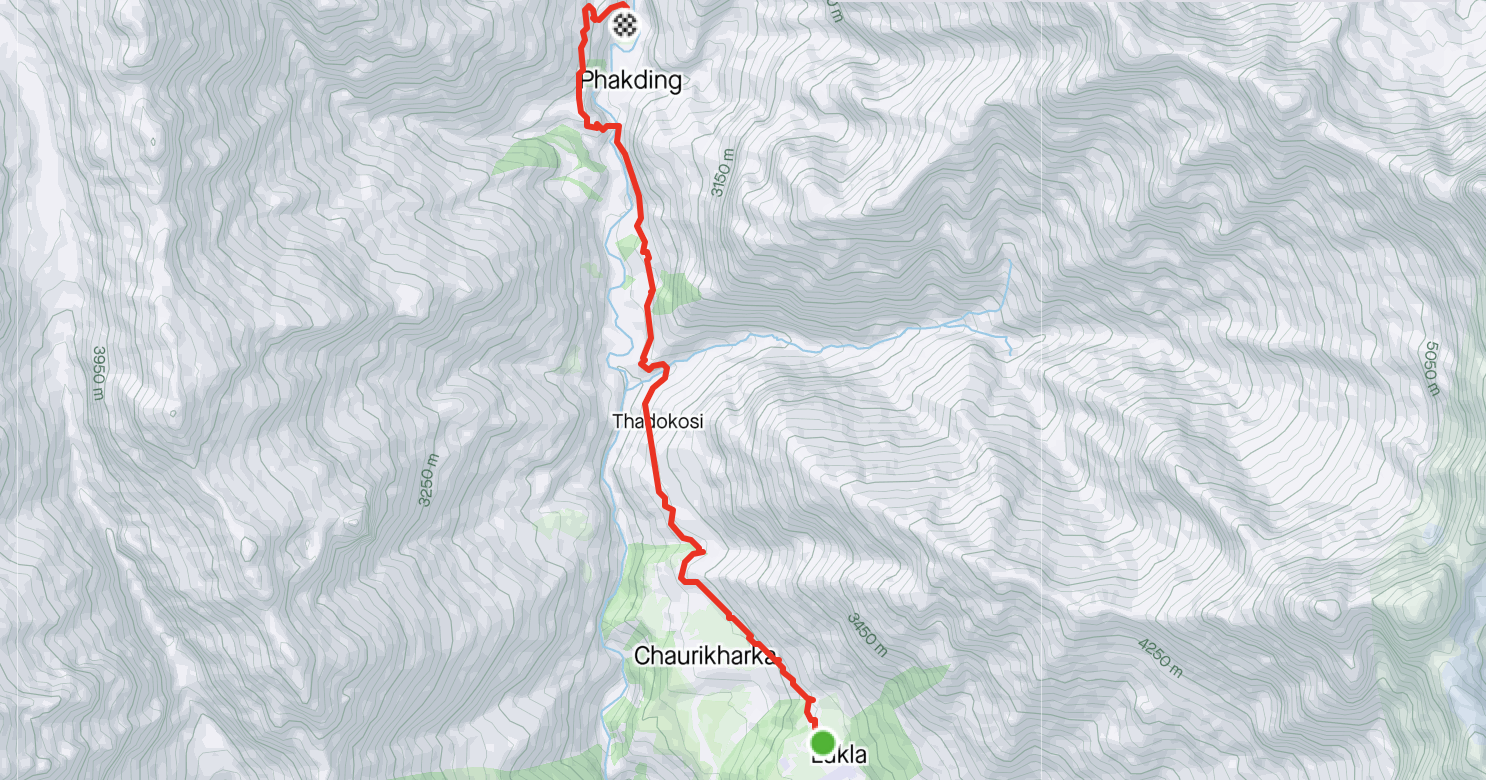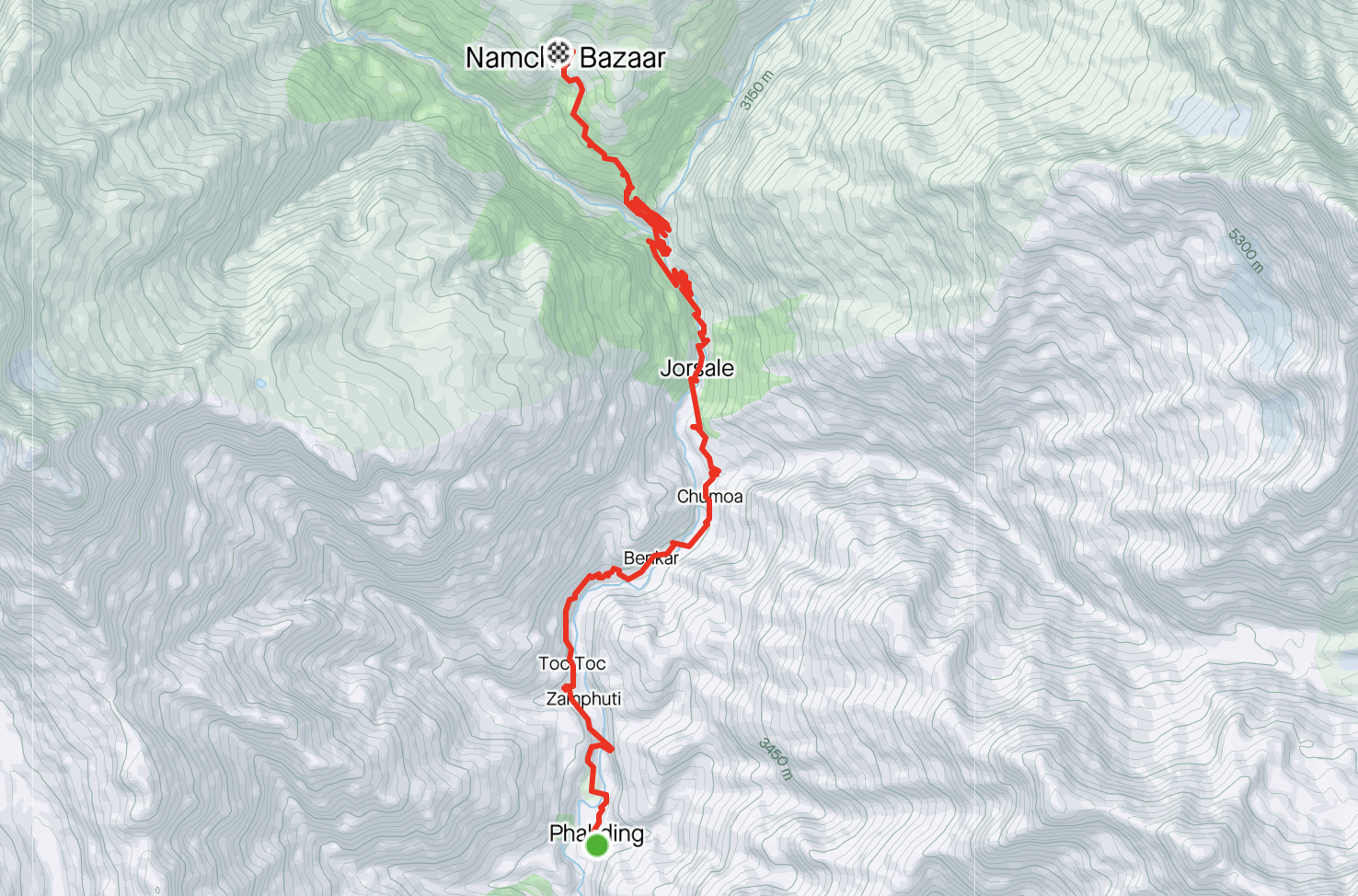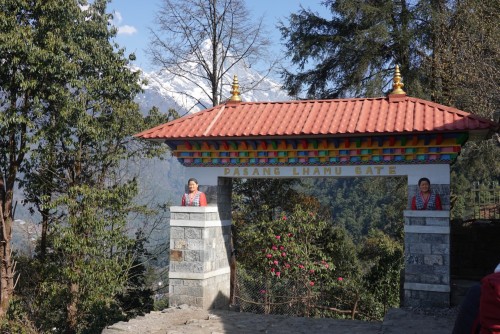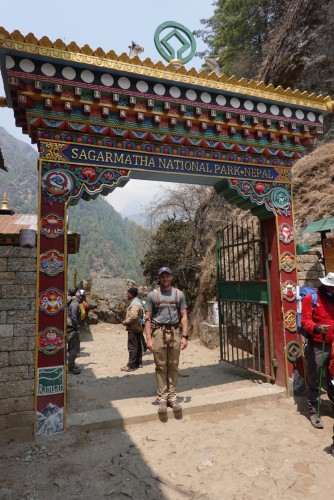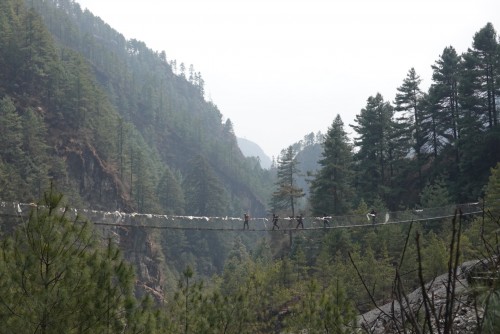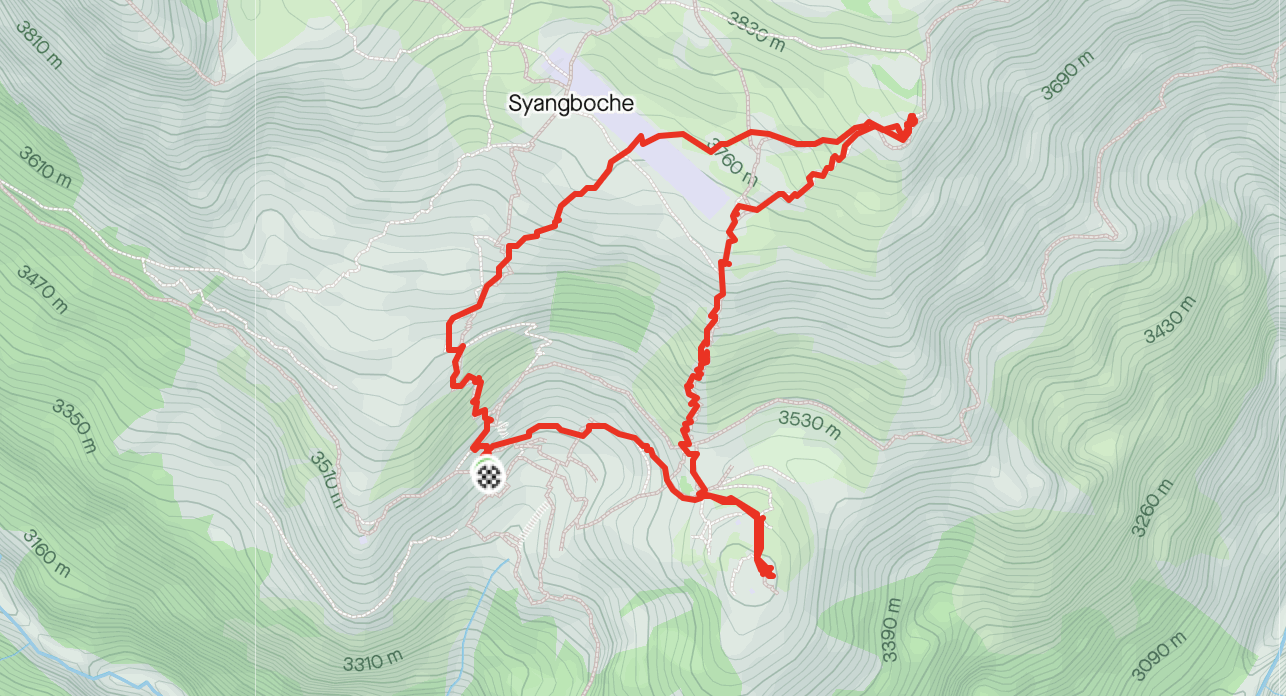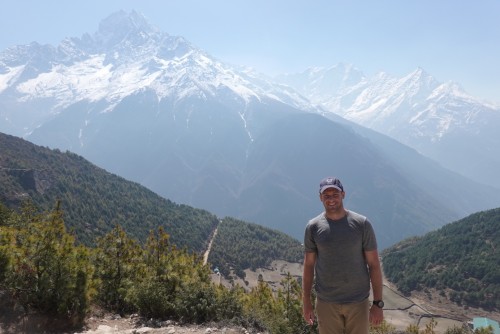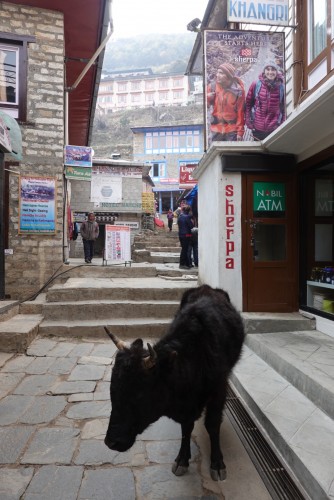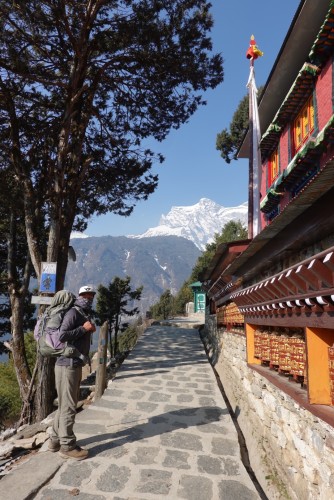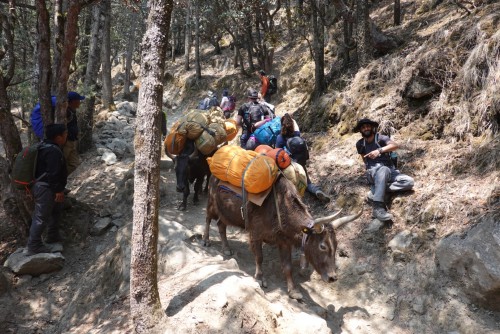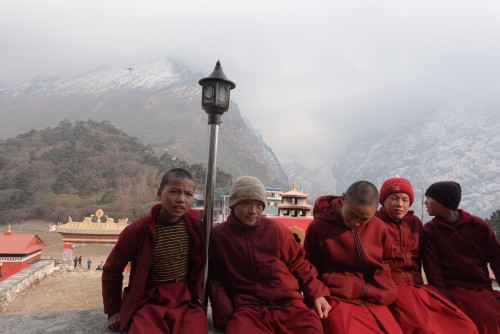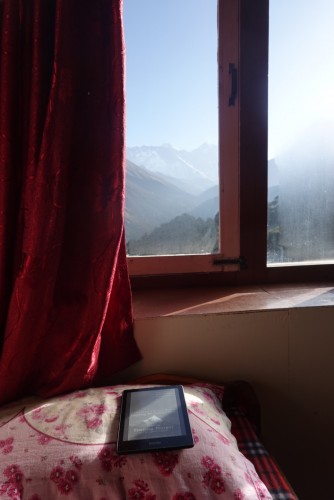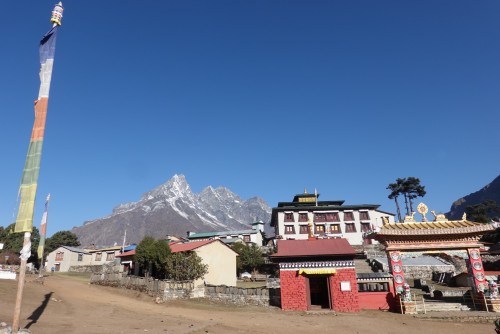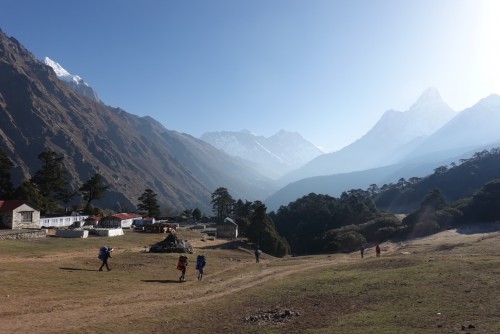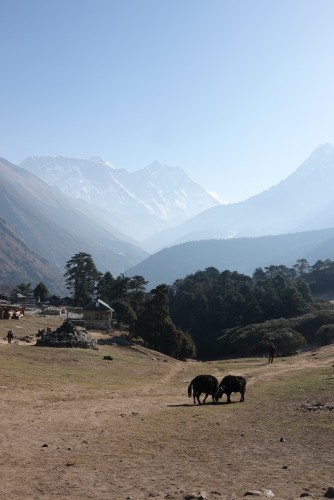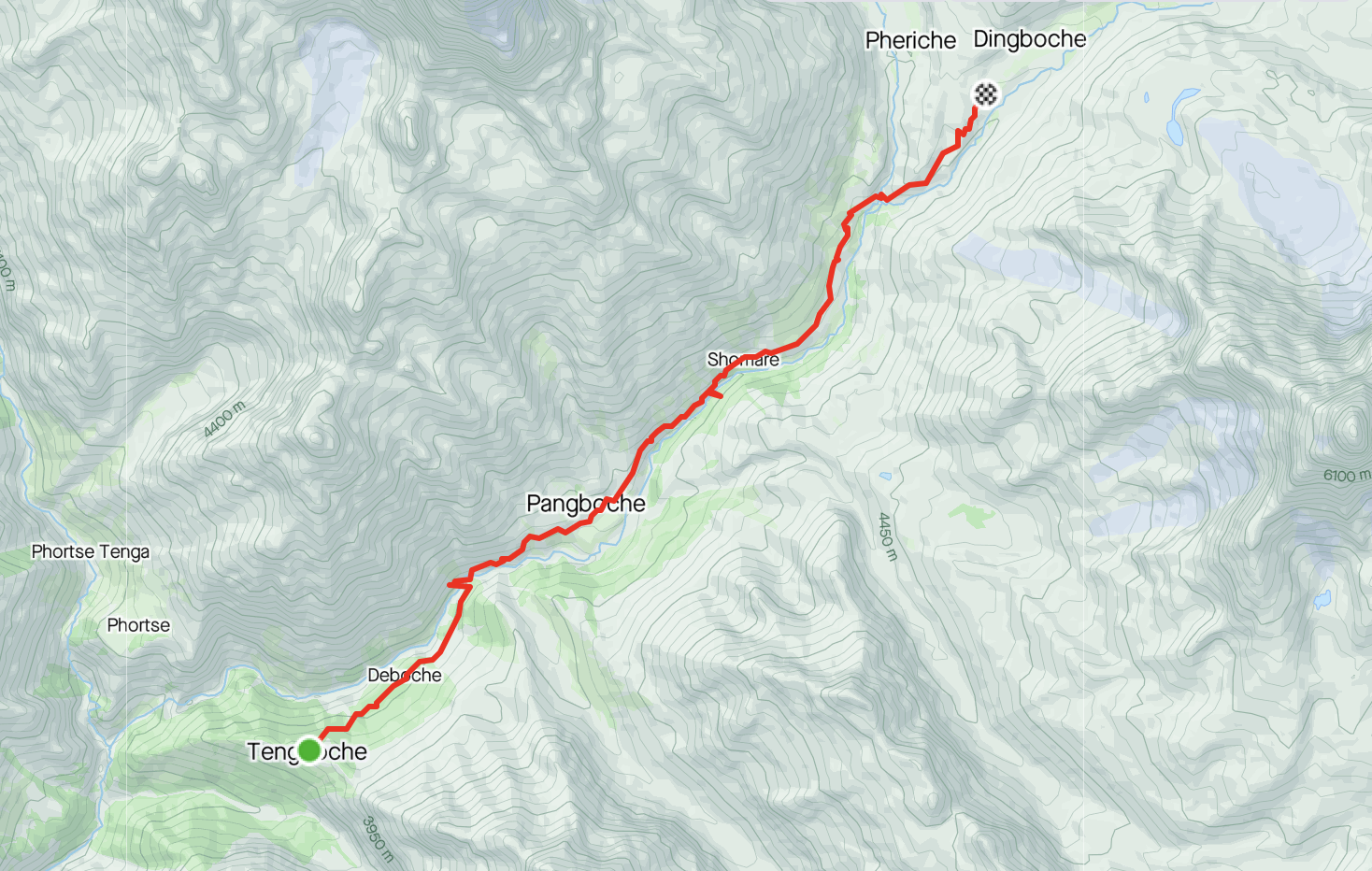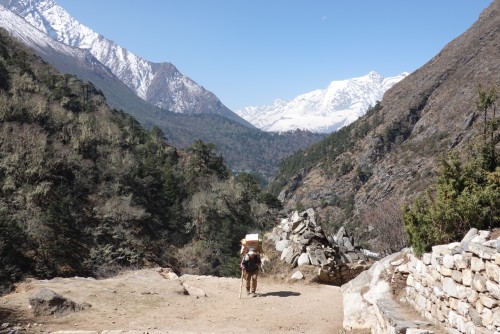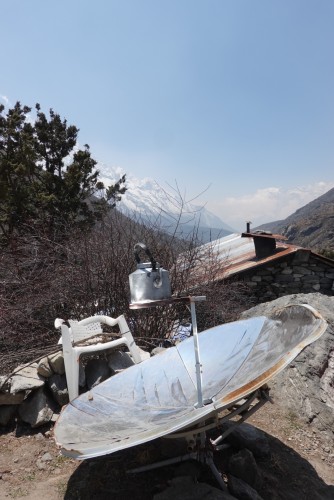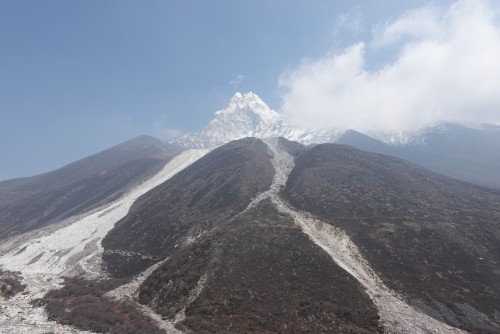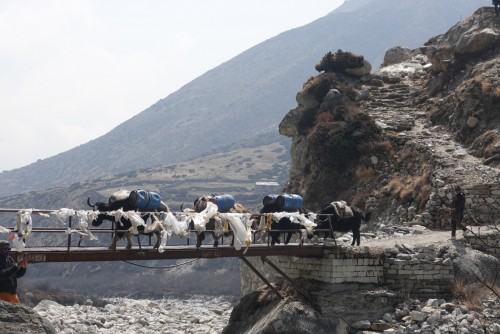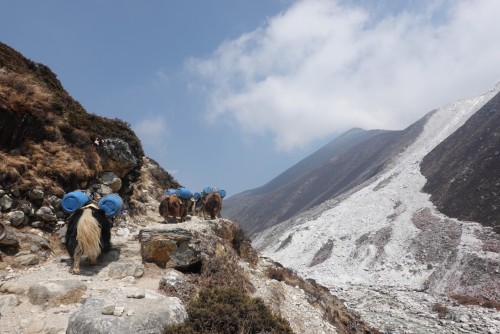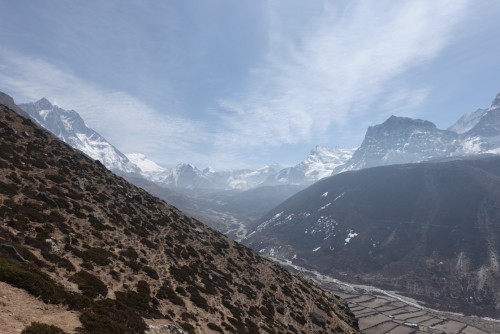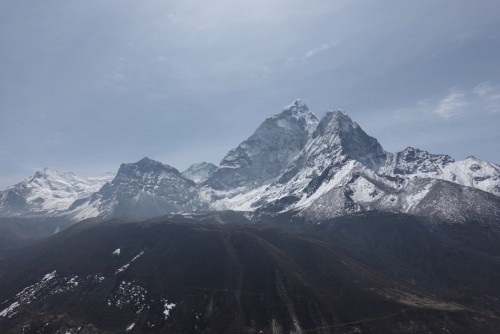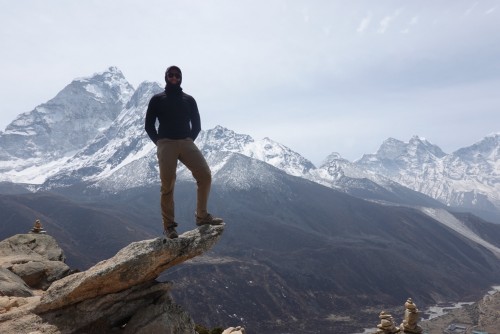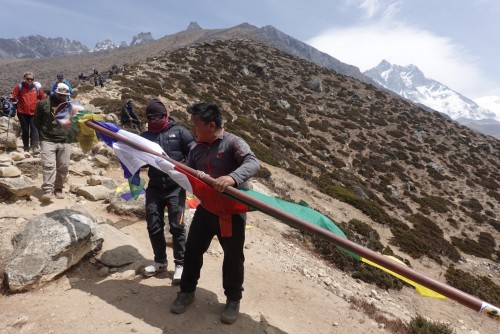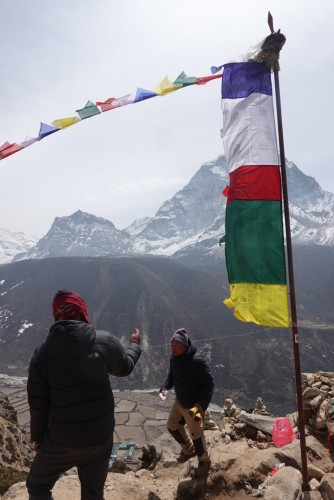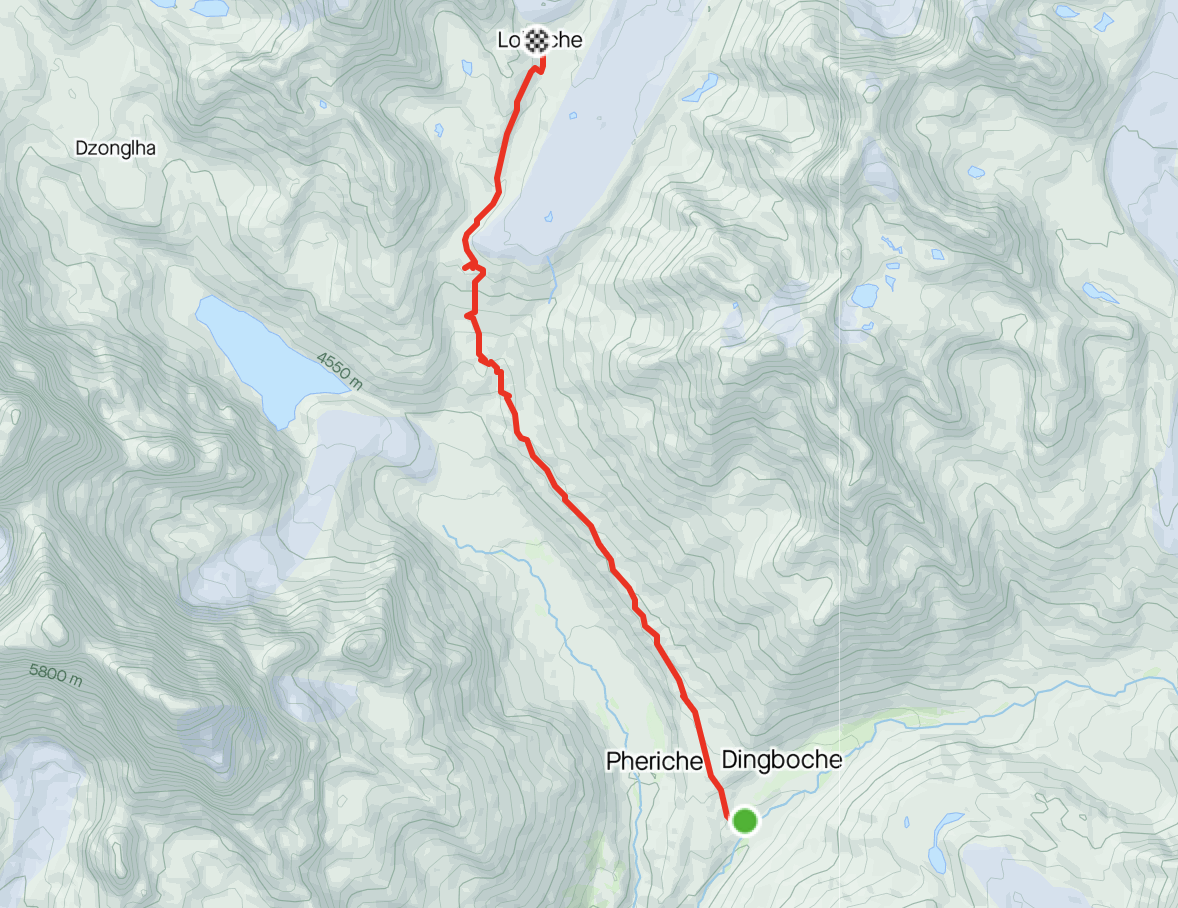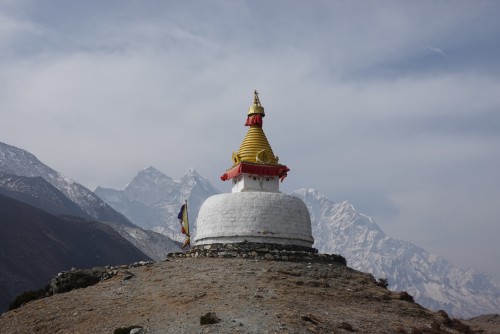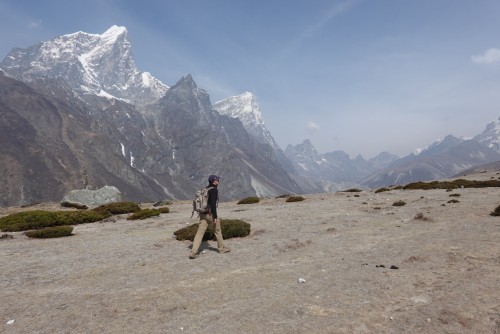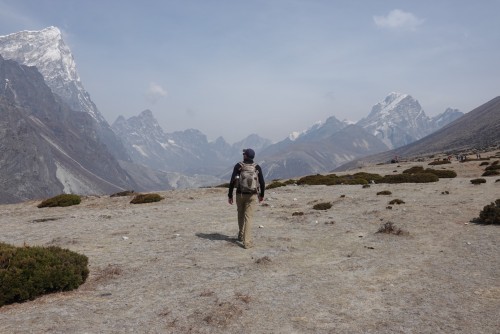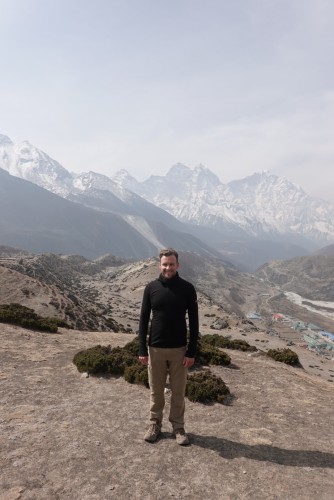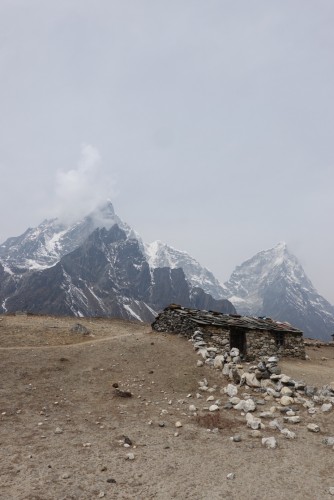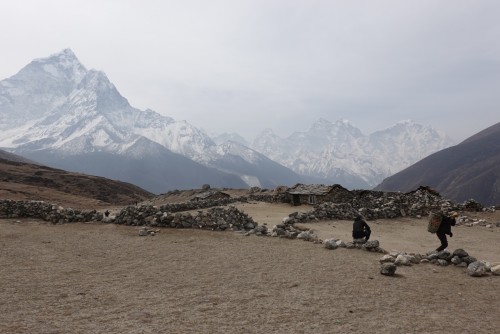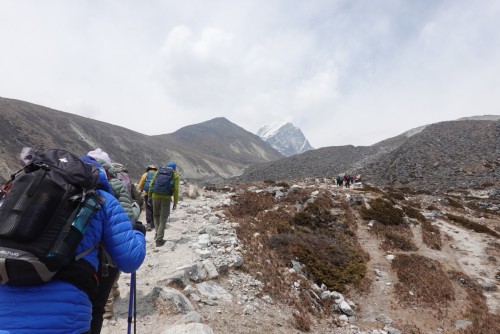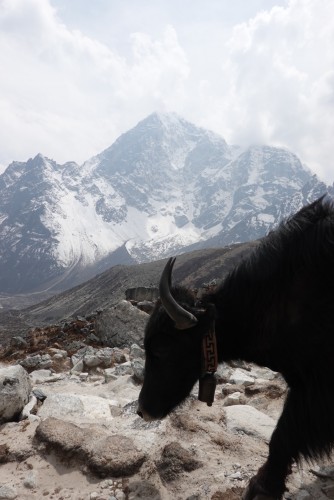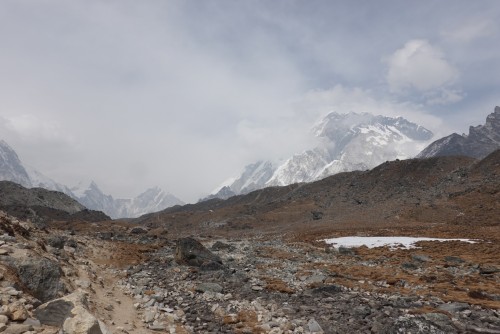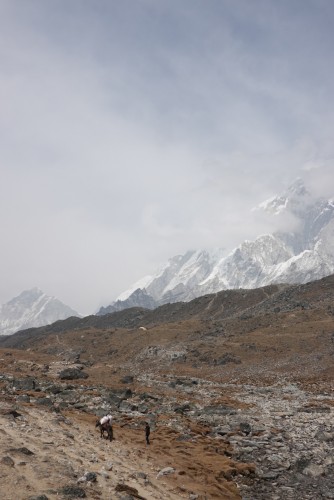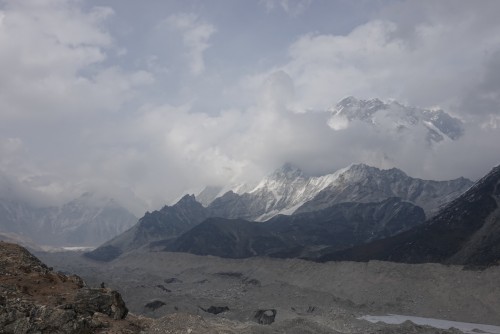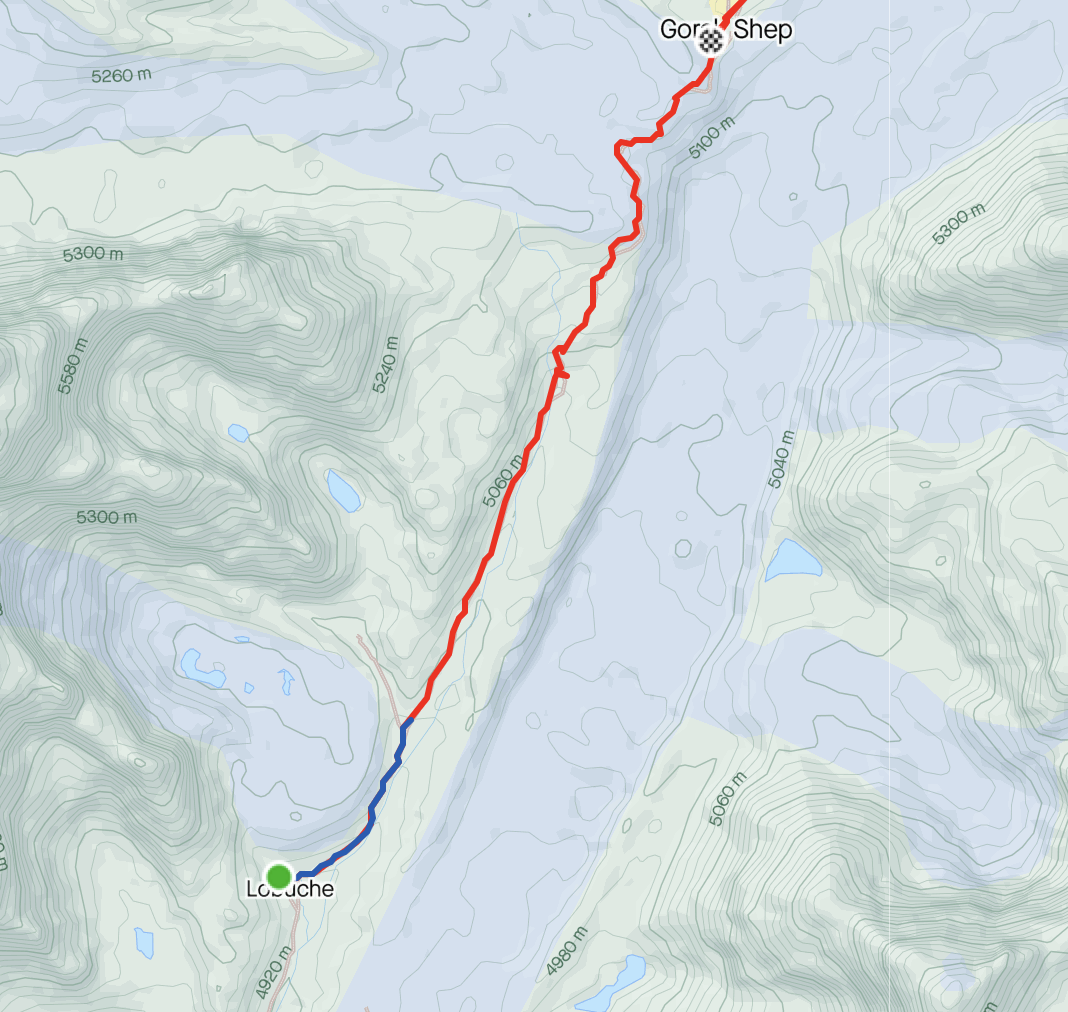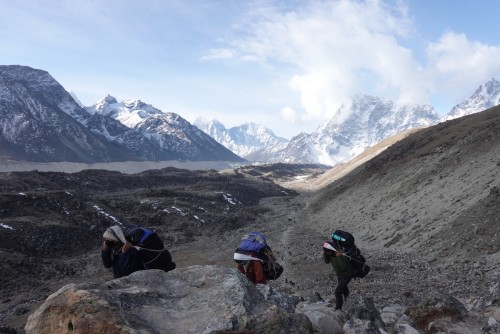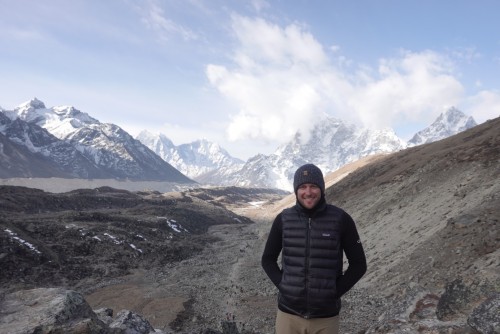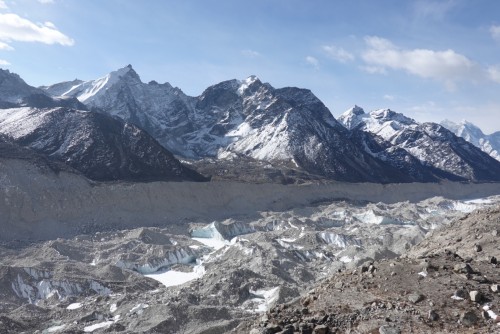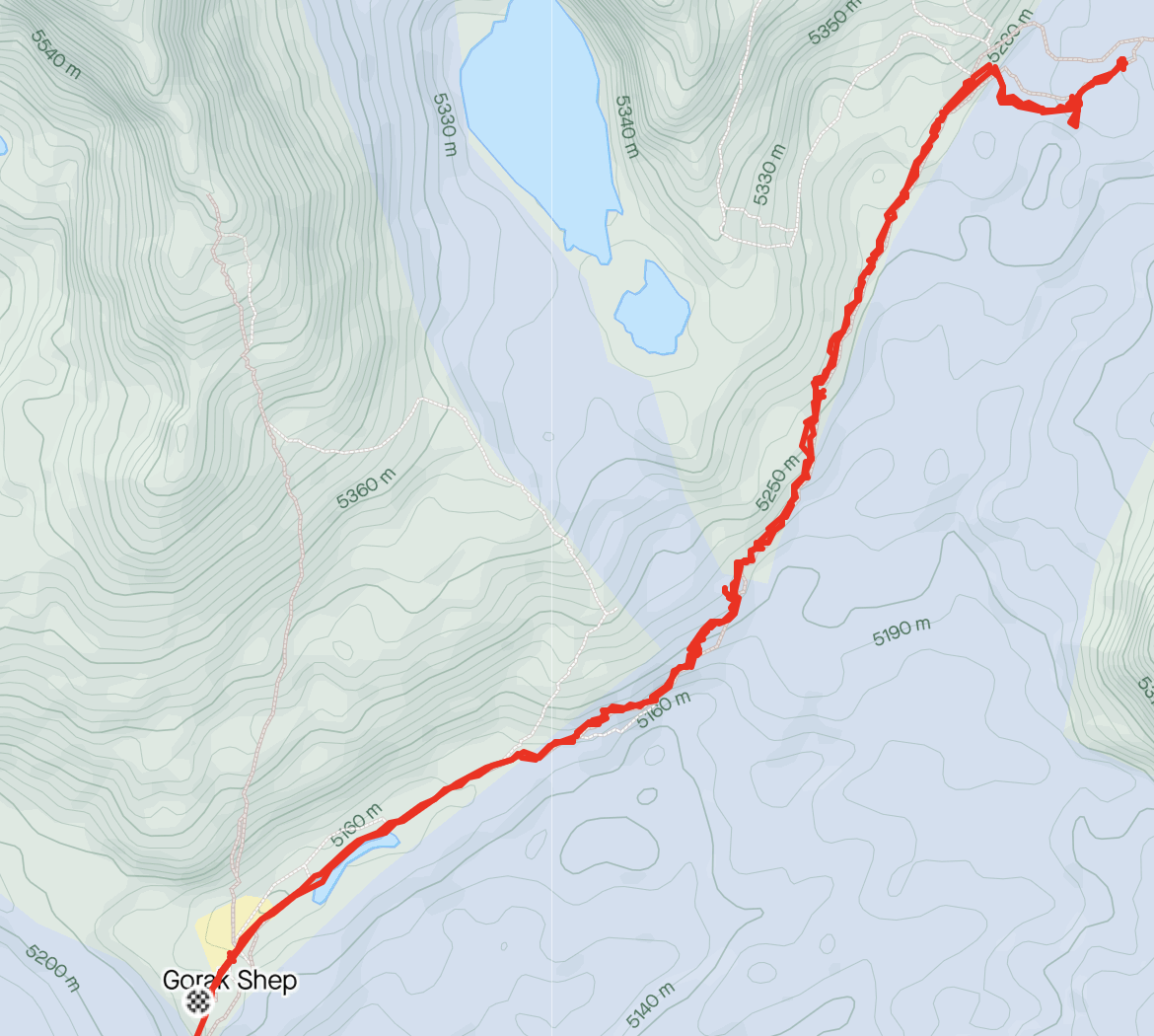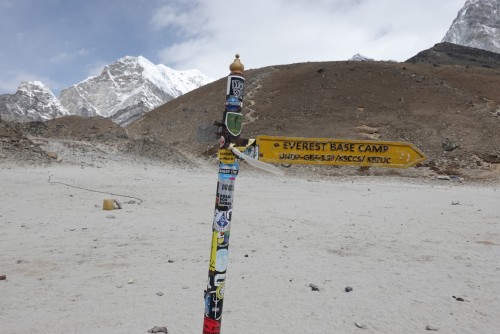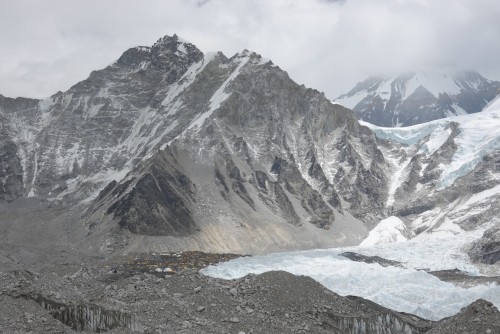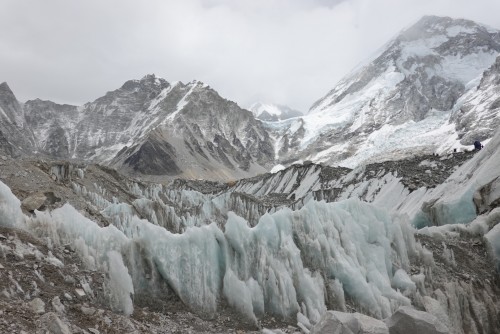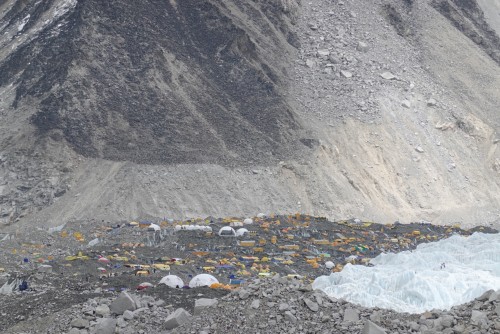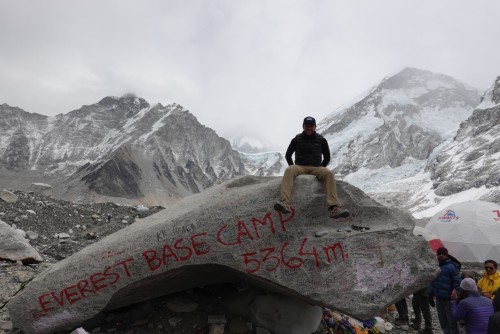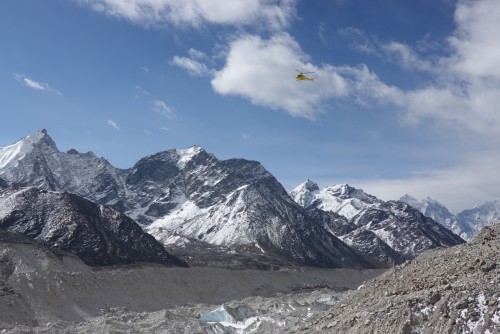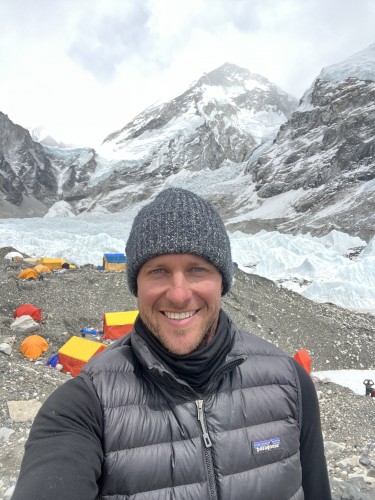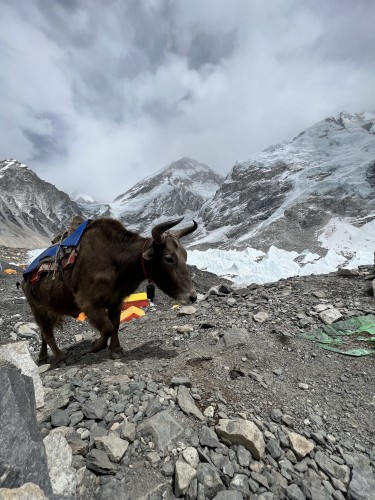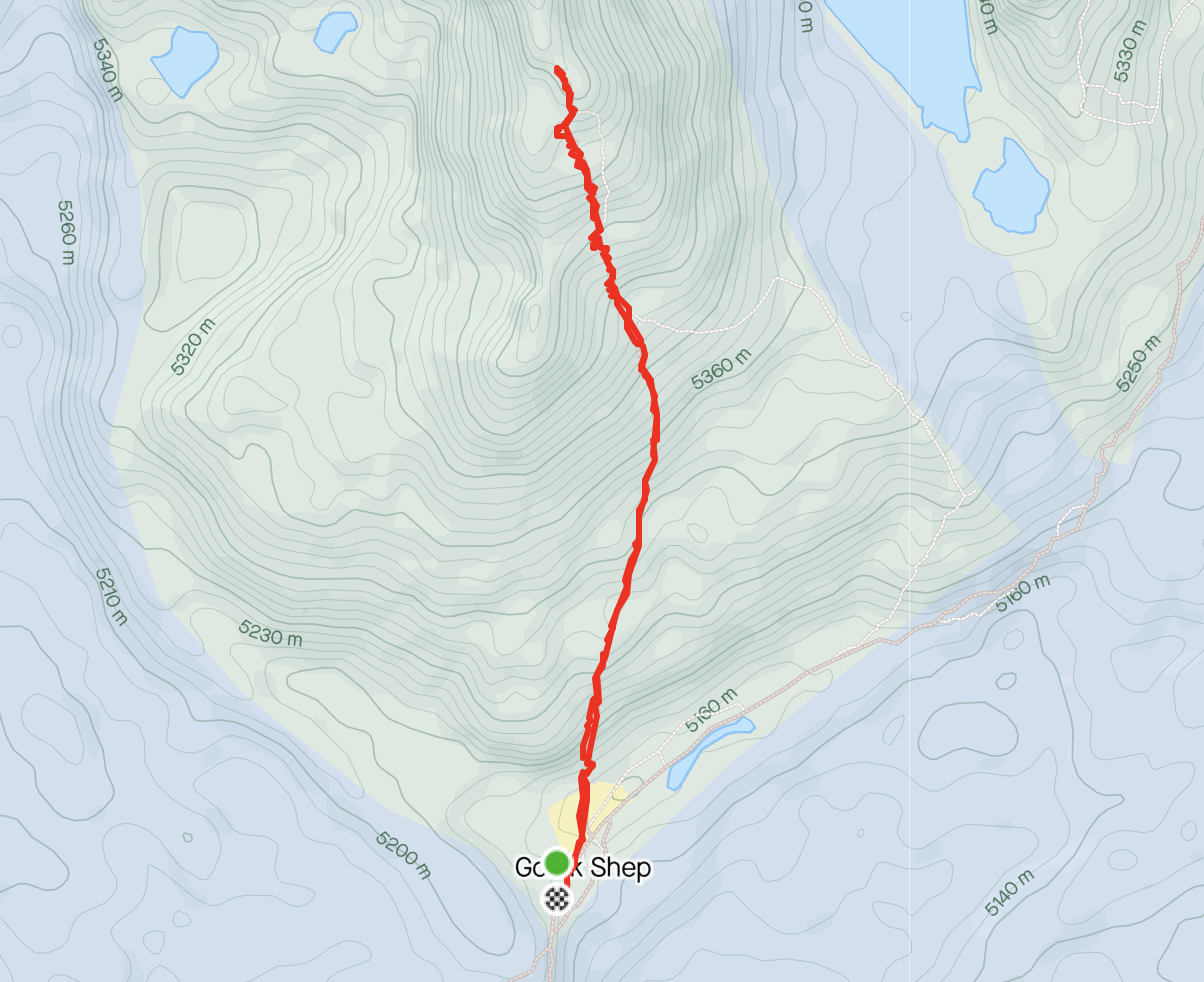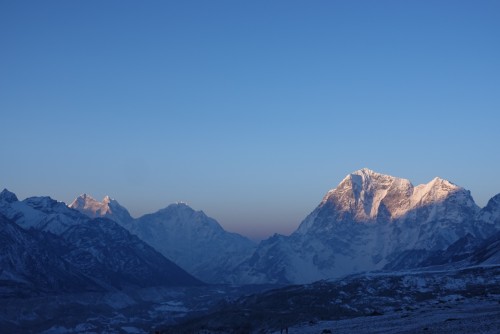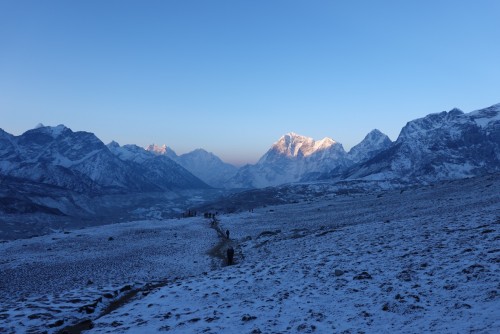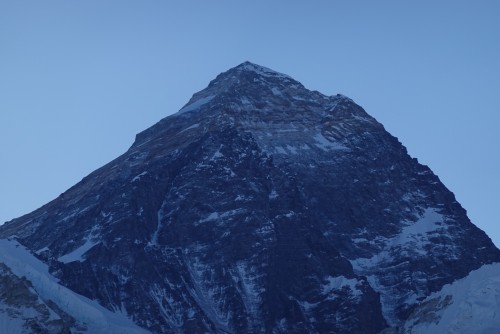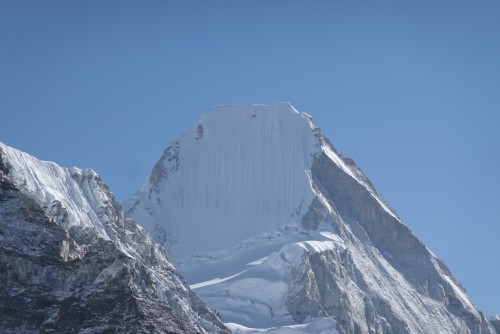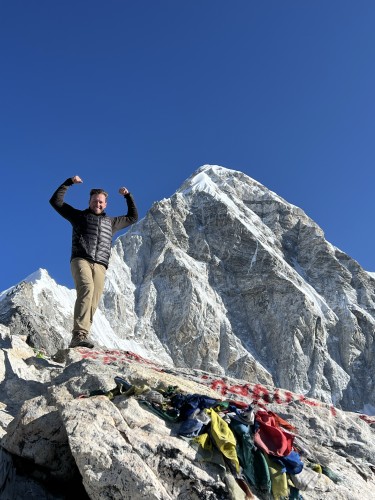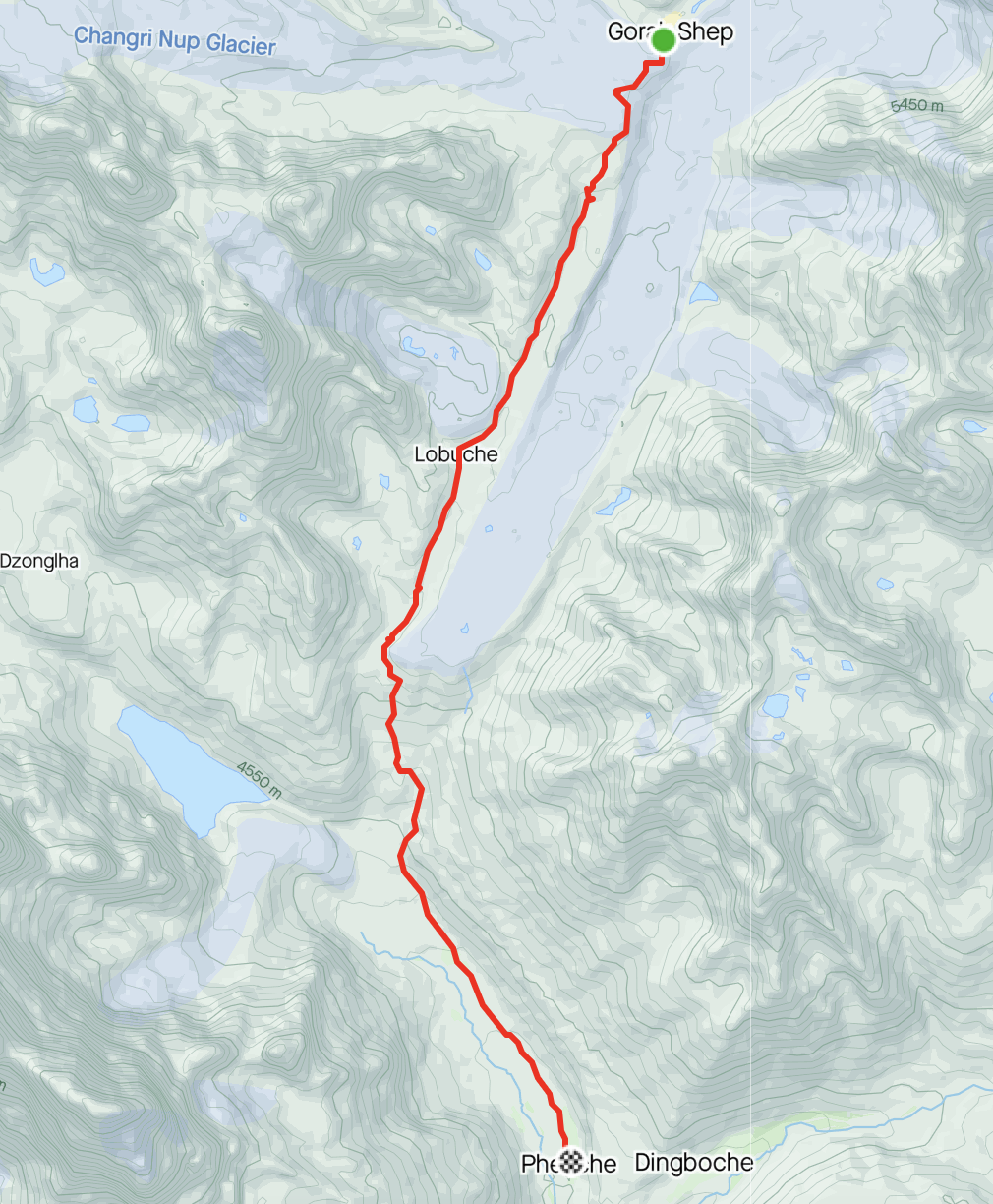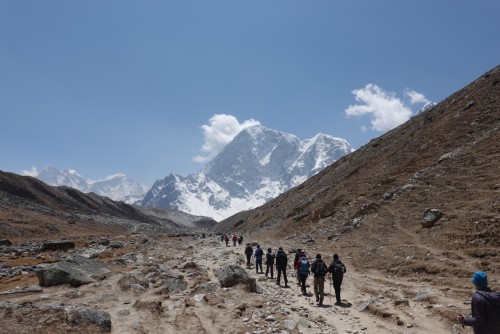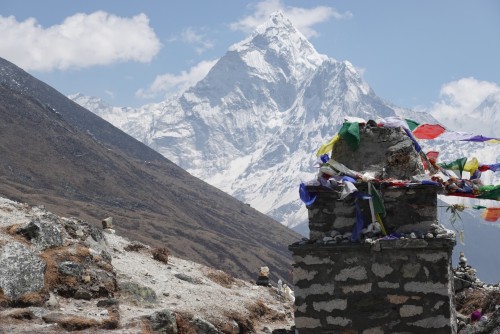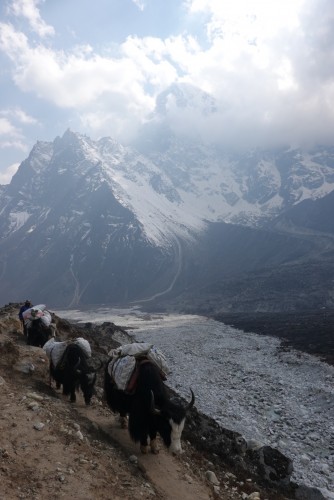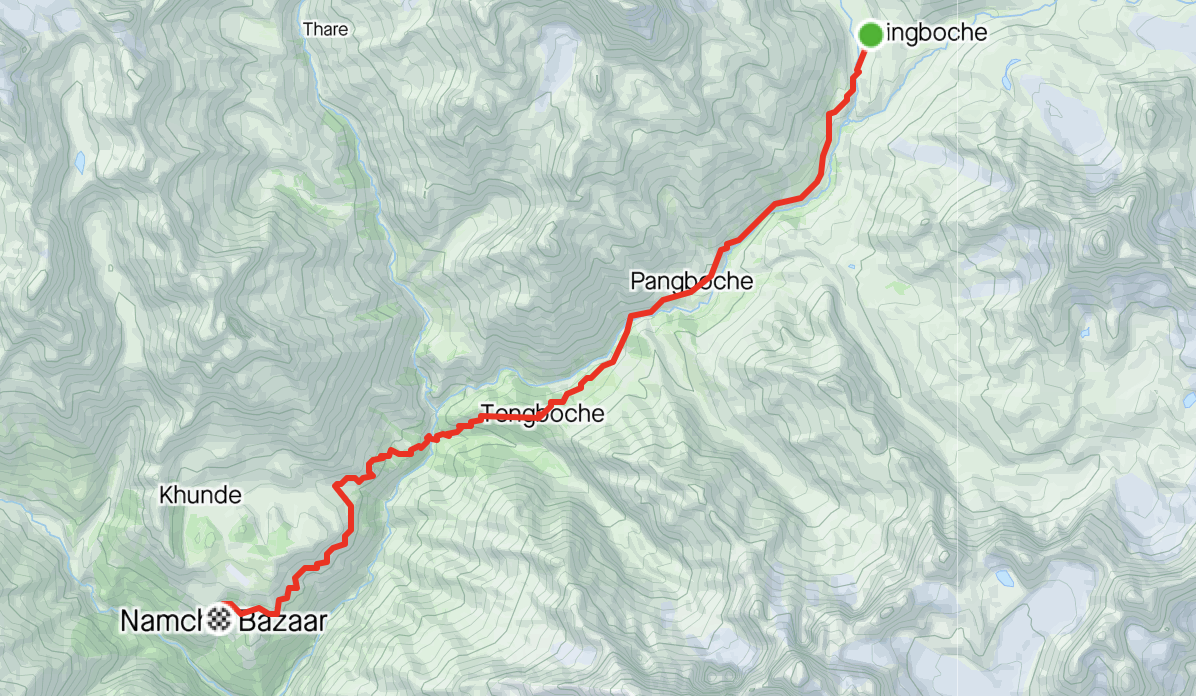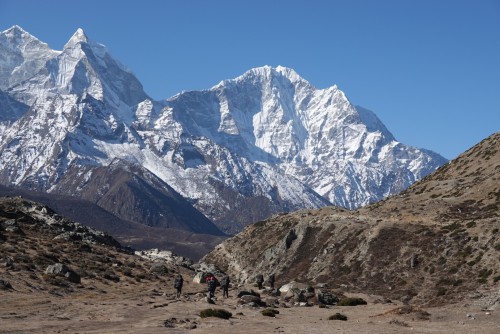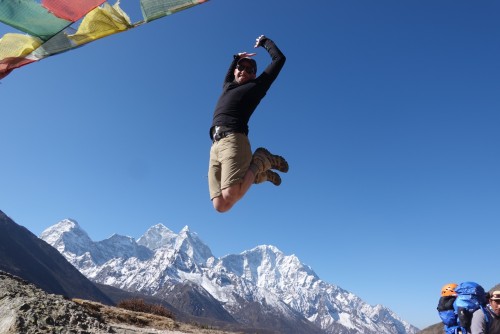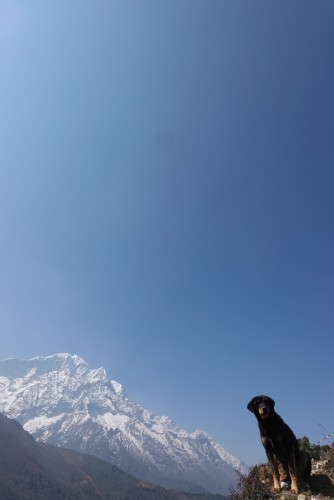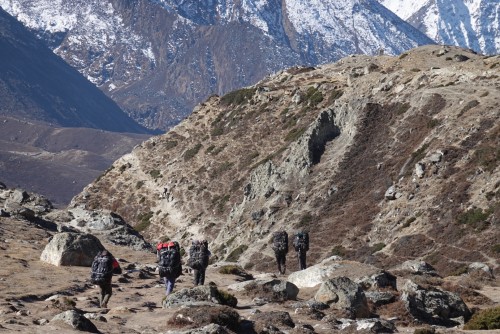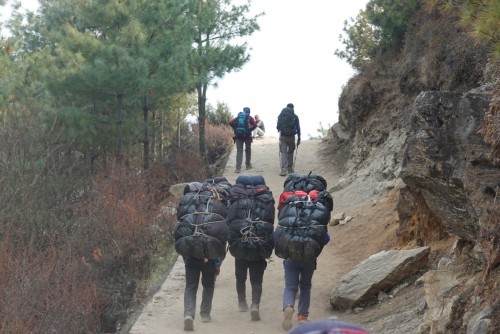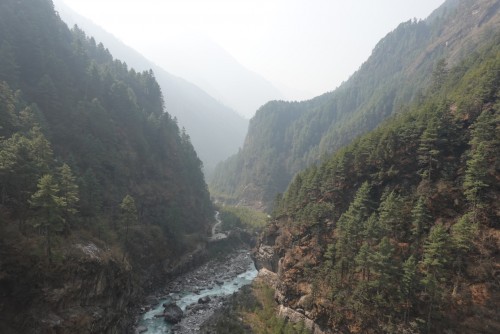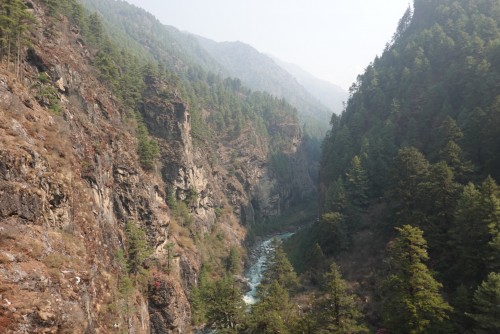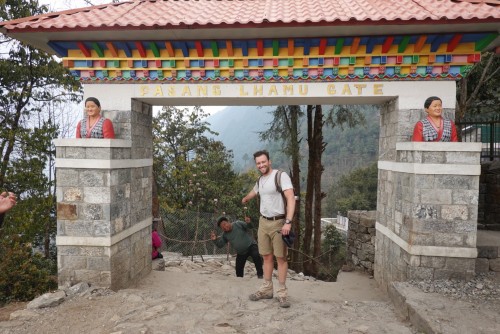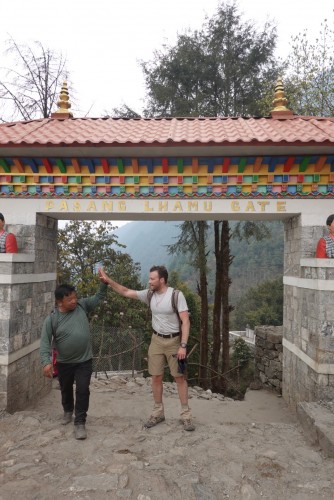With no longing desire to travel to the Himalayas, the Boofhead booked a ticket 12 weeks ago to hike to the base camp of Mount Everest. A summit that has been more recently conquered by many who have attempted and denied by many more. It’s spiritual reach become only more apparent day by day as we became closer to Chomolungma – what the locals of the area refer to her, the mountain, as.
To set the scene, the Boofhead booked this trip with G Adventures of whom organises transfers, guides, accommodation and national park hiking permits – there is more administration involved than one would initially think. They employ a CEO (Pasang) and two guides (Dawa and Mingma). The Sherpa people base the names depending what day of the week they are born ie Pasang was born on a Friday, Dawa on a Monday and Mingma on a Tuesday.
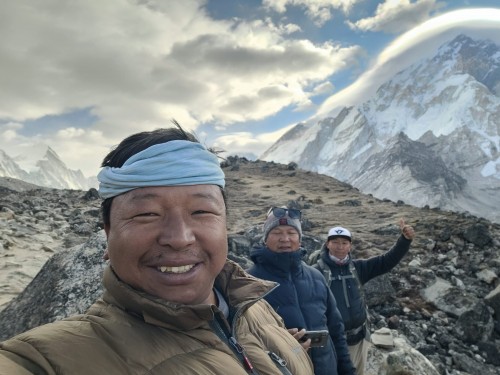
This has been structured day by day to get a sense of the Boofhead’s experience, but so as the reader you can scroll to the bits that interest you most.
Map of the Sagamartha National Park
But first, I want to note and send condolences to the families of three Sherpas that died in an avalanche between Camp 1 and Base Camp, 3 days before we arrived there. Part of the reason for the avalanche is due to late snowfall (first snow for the winter was only in March) so the snow did not have enough time to freeze. Also to the local person who fell off the side of Kala Patthar the day after we took photos and marvelled the views of Base Camp and the surrounding mountains. These are all very tragic events that effected our guides who knew some of these people. All in the name of tourism, one of Nepal’s largest exports. I don’t think these events would have reached the news as they occur all too often.
Day 1 – Kathmandu
We met our guide Pasang Sherpa in Kathmandu. Pasang is part of the Sherpa tribe and it is only those who are part of this tribe of whom can be referred to as Sherpas. He was the key to the successful arrival at EBC by trekking very slowly and ensuring all vitals allowed us to stay healthy.
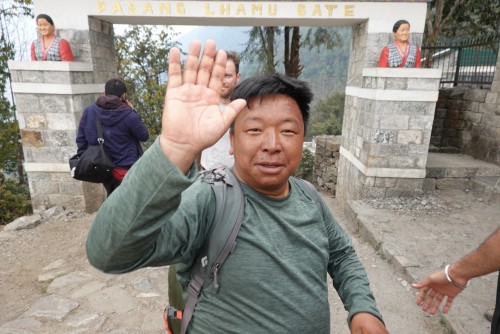
Day 2 – Kathmandu to Ramechhap
Kathmandu has inconveniently closed its domestic airport terminal for an upgrade. This meant a 135km bus trip or 5hrs to get to the Khurkot Ramechhap airport. Due to volatile weather, flights to Lukla Airport are generally only very early in the morning so a night in the middle of nowhere entailed. This would be the last time the Boofhead would use his mobile phone until Day 15 – two weeks with a connection only to nature and those around him.
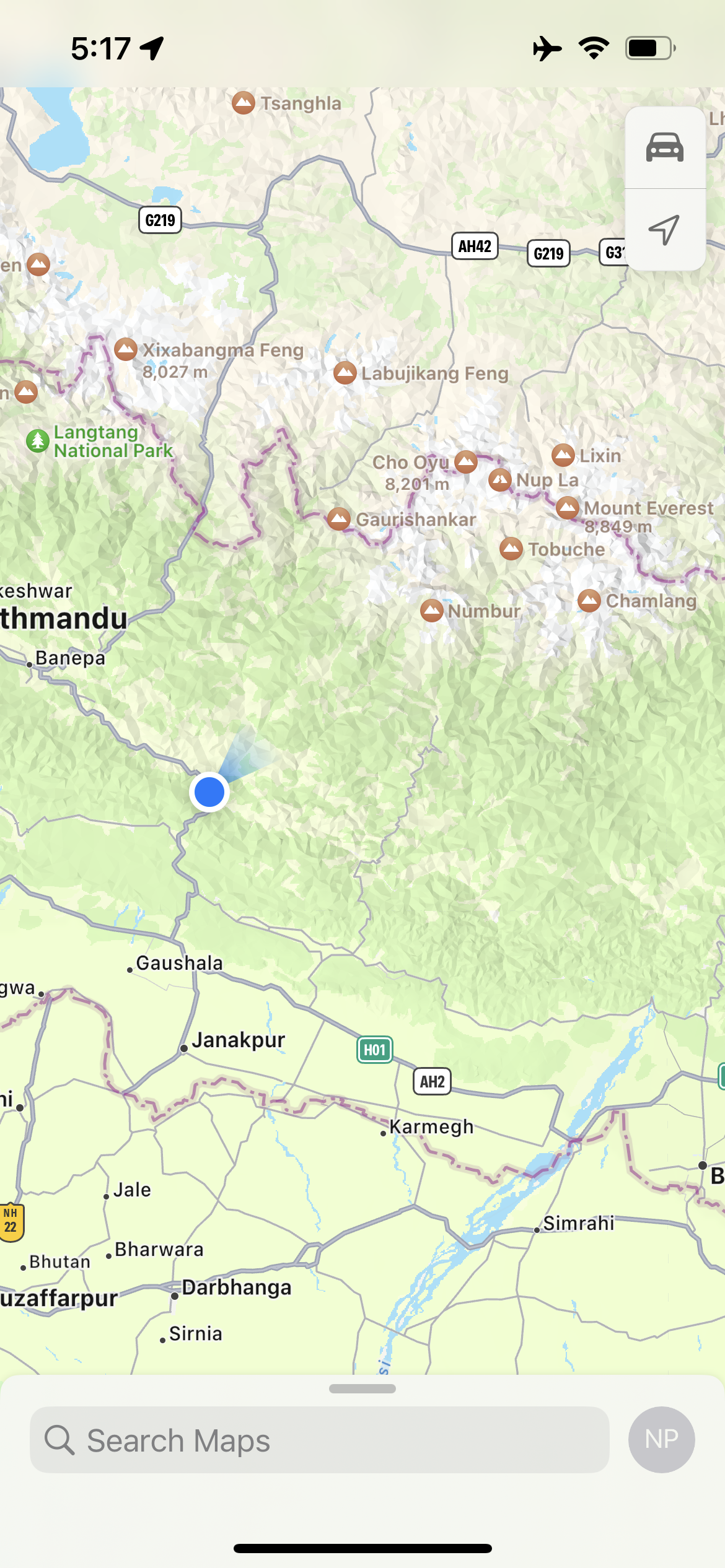
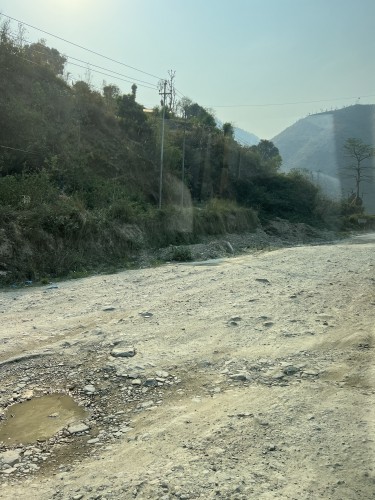
Day 3 – Lukla to Phakding (elevation: 2660m)
A 20 minute flight in a twin otter at 6am to bring us up to Lukla Airport – a 500m runway etched into the side of a mountain, surrounded by a village. This was a flight the Boofhead had heard much about but to experience the turbulence of the plane and skill of the pilots was something completely different.
A short 4hr trek to Phakding where we would spend our first night. Not overly gruelling but a nice test of the boots and higher altitude. It was also the first real exposure to the nightly chill of the Himalayas; temperatures sat around 0 degrees and the accomodation provided no heating, with only tissue paper walls. You felt everything !
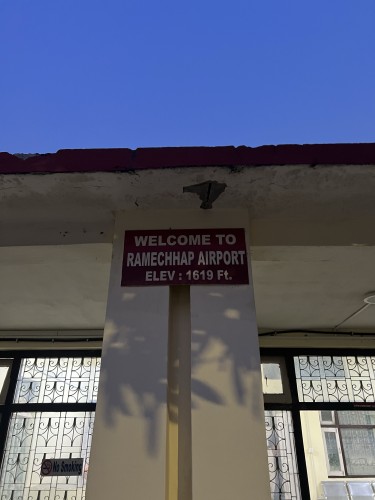
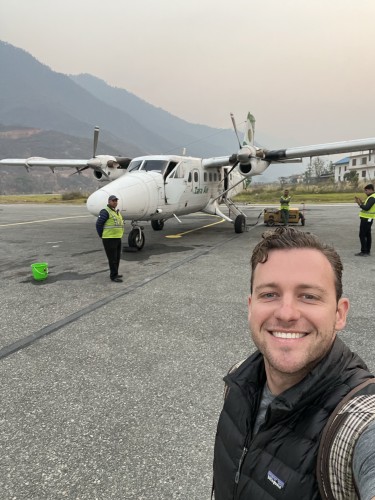
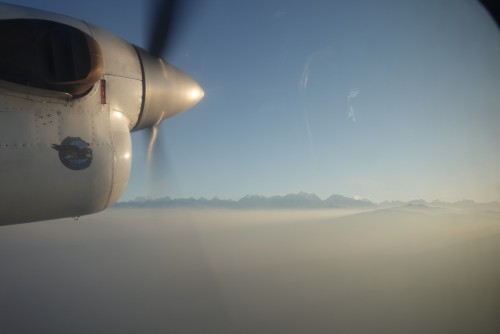
Day 4 – Phakding to Namche Bazaar (elevation: 3440m)
• Elevation gain: 800m
• Trekking time: 8hrs
• Trekking distance: 12km
You get the understanding already of how slowly the group trekked. This was not because anybody was slow or unfit but because it is crucial to allow your body to adjust to the higher altitude to avoid the sickness that can come with it.
Namche is the unofficial capital of the Khumbu region (ie the area we were trekking). It is a busy town as a historically main meeting spot for trade and now for shopping and a hot shower – there isn’t much running water higher up the trek.
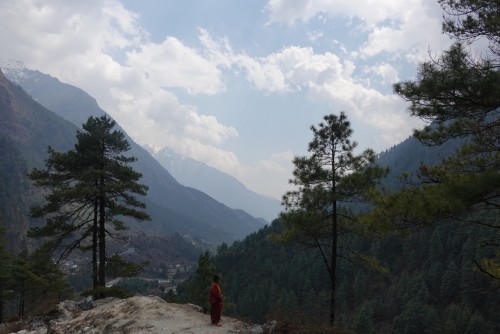



Day 5 – Namche Bazaar (elevation: 3440m)
• Elevation gain: 420m
• Trekking time: 3hrs
• Trekking distance: 4.5km
• Blood oxygen: 90
Like a broken record, we had to maintain our ability to deal with altitude. Whilst not incredibly high, it was an altitude we weren’t just visiting for an hour or two but one we’d be living in and above of over the next week.
Today was also the first day Pasang began recording our bloody oxygen levels each morning and resting heart rate. It was the blood oxygen that was the focus as a dramatic change to this would be a guide to whether we would suffer from hypoxia. It was also the first day we started Diomox – a tablet take to reduce the likelihood of altitude sickness.
Namche is a place that attracts many helicopter of whom are evacuating 100-150 people from anywhere on the mountain every day. Whilst a large volume, a small percentage with approx 25,000-30,000 trekkers between Lukla and Everest summit at one time.
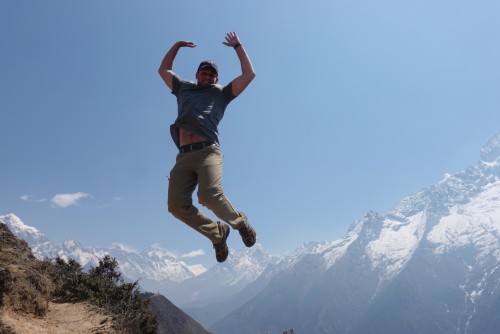
Day 6 – Namche to Tengboche (elevation: 3880m)
• Elevation gain: 440m
• Trekking time: 6hrs
• Trekking distance: 10km
• Blood oxygen: 95
It goes to show the importance of acclimatisation days – a 5% improvement of the Boofheads oxygen levels.
Tengboche is a beautiful little town on the top of a ridge, with a monastery in the corner. We visited the monastery with a monk reading prayers and rituals. One of our guides, Dowa, had brought prayers flags (the colourful flags you see in lots of photographs) and many little red necklaces. He had the monk to bless these for us and each member of our crew wore the red necklace to ensure safe passage.
Day 7 – Tengboche to Dingboche (elevation: 4350m)
• Elevation gain: 470m
• Trekking time: 6hrs
• Trekking distance: 10km
• Blood oxygen: 93
It isn’t alway just a hike in a straight line up. Like most treks, you walk up and down different trails with total ascents and descents being much more than is identified by the elevation gain. The Nepali people refer to this as a Nepalese flat – and there is nothing flat about it.
The first mild headache was felt by the Boofhead in Dingboche. Ibuprofen was taken as a preventative measure.
This was one of the first nights where the ice froze on the inside of the window and you could see your breath when you breathed. Sleep consisted of not much and bed ware was thermals (top and bottom), icebreaker jumper, down jacket vest and a beanie. The single plywood walls of the tea house accomodation did nothing to keep the cold out and (lack of) heat in.
In hindsight, Dingboche was heaven on earth with access to running water to flush a toilet that was in the bedroom – the higher we went the worse the amenities.
Day 8 – Dingboche (elevation: 4350m)
• Elevation gain: 350m
• Trekking time: 3hrs
• Trekking distance: 3km
• Blood oxygen: 88
Today was an auspicious day for the Sherpas. It meant that on the way down from our acclimatisation hike, we would stop and replace the prayer flags and traditionally say a few words in the Sherpa dialect.
These prayer flags had been blessed by the monk in Tingboche and we felt very fortunate to have been included in this ritual of the local people.
Day 9 – Dingboche to Lobuche (elevation: 4910m)
• Elevation gain: 560m
• Trekking time: 5hrs
• Trekking distance: 9km
• Blood oxygen: 90
Things really shifted gears here. Breathing became more difficult, amenities went down the toilet hole (western toilets became scarce and many other trekkers had a problem with their aim).
It started snowing, the overnight temperature hovered around -10 degrees. Gloves had to be worn to stay warm at night. Electronics would lose battery if they weren’t in your sleeping bag.
The trees disappeared and the land became barren. The beautiful mountainous landscape became a rocky moonlike space.
The higher we trekked the prices of meals and water followed. A local meal of Dal Bhat (rice, lentils, potatoes) doubled. A bottle of water went from $1 to $5.
Sleep became redundant from the cold, worsening respiratory blockages and the Khombu Cough (chesty consistent cough) ruled the restoration time.
Day 10 – Lobuche to Gorakshep (elevation: 5180m)
• Elevation gain: 270m
• Trekking time: 5hrs
• Trekking distance: 12km
• Blood oxygen: 85
The lodging here was despicable. Colder again than other nights, shared blankets, unwashed bedding. Think taking the mattress home from the local council clean up.
The photo makes it look better than it was but the Boofhead can assure you that it’s nowhere anyone wants to stay more than one night.
Its purpose was to stay as close to EBC as possible.
Day 10 – EVEREST BASE CAMP !
At an elevation of 5364m above sea level, the Boofhead made it to the starting point of those summiting the worlds highest mountain.
The elation and gratitude to have made it to EBC is an indescribable one to those who haven’t experienced it.
A few tears were shed at this accomplishment and the awe of Mount Everest.
Words don’t do it justice, and photos barely do either.
Day 11 – Kala Patthar (elevation: 5600m)
A 430am wake up at Gorakshep (a sleepless night so not really a wake up) to start the hike up to Kala Patthar.
Only worth the hike on a clear morning, such as this, the 5km return hike takes approx 2.5hrs due to the high altitude and therefore slow pace.
Kala Patthar offers 360 degree views of the Everest region and provides a better opportunity to see base camp and the passage to the summit.
This hike was made even more special by the fact it had been snowing all night. It also made it difficult as there was ice of the rocks.
Day 11 – Gorakshep to Pheriche (elevation: 4270m)
• Elevation drop: 910m
• Trekking time: 4.5hrs
• Trekking distance: 12km
• Blood oxygen: 73
The blood oxygen was measured approx 9am after returning from Kala Patthar. This meant it is likely this number was well below 73 when the Boofhead was at 5,600m above sea level.
It was a day of reflecting and taking in the remains of the moonscape before heading back to the tree line.
Whilst it took 8 days of hiking up to teach EBC, it will only take 3 days to return to Lukla
Day 12 – Pheriche to Namche Bazaar (elevation: 3440m)
• Elevation drop: 830m
• Trekking time: 8hrs
• Trekking distance: 21km
• Blood oxygen: 91
It was all coming to an end rather quickly, with so many friendships and bonds created as we worked as a team to reach EBC.
Each of us enjoyed the welcomed return of more oxygen to our bodies and the warmer weather – of which we thought was freezing on the way up… perspective.
Day 13 – Namche to Lukla (elevation: 2830m)
• Elevation drop: 610m
• Trekking time: 8hrs
• Trekking distance: 19km
• Blood oxygen: 95
The final day of the trek and it was nice to take the boots off for the last time this trek.
We had a dinner with the porters who carried our duffle bags for the entirety of our trek and thanked them for their efforts. A great bunch of blokes who are grateful to have work to support their families. Also a farewell to one of our guides, Mingma, who led from the front to ensure we reached EBC.
Day 14 – Lukla to Kathmandu
• An early morning flight down the tiny Lukla runway toward Ramechhap where we returned to Kathmandu by the 5hr, 135km bus ride. Just about all of us slept for most of the time.
• A farewell to our other guide, Dowa, before a final dinner with our leader, Pasang.
• Multiple hot showers were enjoyed throughout the afternoon in the lead up to dinner.
Summary
After 120km of trekking over eleven days, the Boofhead embellished nature, breathing in the cold fresh air, taking a break from the fast paced environment of home and resetting before heading back to a life where everything is done in a ‘rush’. Particularly to the local people met along the path to / from EBC, thank you for always your patience and willing to show some a Westerner that a “slowly slowly” approach to life won’t only just get you to your destination, it will allow you to stop and admire the scenery along the journey.

